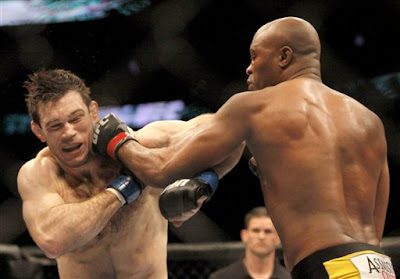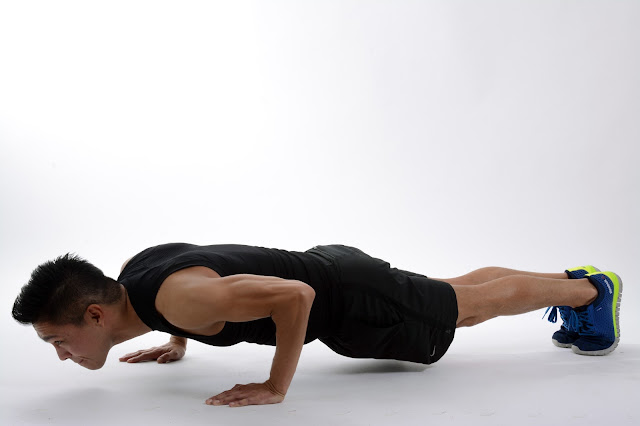Martial Arts Relevant to Cops

"Hi, I have been reading some articles (not all yet) of yours on Bodybuilding.com. As a fellow Police Officer (just 3 years) I appreciate reading articles regarding police fitness by someone who has been there, done that.
"I am currently only lifting weights with minimal cardio right now. I like the idea of the HIIT cardio, and will do that from now on.
"My question is regarding training, specifically to martial arts. I love to train with weights and want to continue to gain mass and functional strength, but I also want skill and training. I love the idea of doing some MMA training, Muay Thai, etc. but have not enrolled into any programs yet. I am afraid those courses will be ‘too much’ and ‘unnecessary.’ They will also burn a tremendous amount of calories which will hinder my weight training/gaining mass. I was thinking more of a Judo or Aikido approach, where the workouts won’t burn your through thousand plus calories everyday.
"Does this at all make sense? Do I have this all wrong? I think I can keep the body going full speed with training Aikido or Judo along with an all out intensive weight training program. I am having a hard time believing I will be able to maintain an intensive weight program with full time MMA/Muay Thai training. What do you recommend?"
- D. Walden
My Answer: It’s funny, I’m in the middle of writing an article on strength training for MMA. Anyway, from what I sense in your email, you want to attain some fight skills, but compromising your size and muscle is not an option. It really depends on how much time and effort you want to devote to each activity. If your physique is your main priority (be honest with yourself now!) and you’re dabbling in MMA, then obviously you’re going to make more progress in bodybuilding and your MMA skills are going to suffer. If it’s the other way around where you value your DT skills more than being big and muscular, then obviously you have to scale back on the weights.
Now you would be mistaken that judo is less physically intense than MMA or Muay Thai. Grabbing opponents, slamming people to the mat, rolling on the mat and falling on to the mat are all very taxing on the body.
Aikido is no cakewalk, but it isn’t as physically demanding as other martial arts. Just look at Steven Seagal these days. A lot of moves in DT are based on aikido, so you will find them more relevant to the job. It’s very training intensive, however, meaning you have to practice the moves over and over, more so than the striking arts.
Bottom line: Try aikido; see if you like the art and if the instructor is any good. In my experience, there aren’t very many good aikido instructors around who can teach aikido for real world situations. If you go with a different martial art, then scale back on the weights.


Comments
I think if you watch MMA matches, you can see that even the leaner fighters are still effective at grappling with the more muscled opponents. Mass doesn't necessarily give you an advantage at grappling unless there is a weight disparity.
"Dan Inosanto, another of Lee's close friends and himself an instructor in Lee's art, adds that Lee was only interested in strength that could readily be converted to power. "I remember once Bruce and I were walking along the beach in Santa Monica, out by where the 'Dungeon' (an old-time bodybuilding gym) used to be," recalls Inosanto, "when all of a sudden this big, huge bodybuilder came walking out of the Dungeon and I said to Bruce, 'Man, look at the arms on that guy!' I'll never forget Bruce's reaction, he said 'Yeah, he's big -- but is he powerful? Can he use that extra muscle efficiently?"
Power, according to Lee, lay in an individual's ability to use the strength developed in the gym quickly and efficiently; in other words, power was the measure of how quickly and effectively one could summon and coordinate strength for "real-world" purposes. "
I was never that massive but as I've gotten older and put on some excess weight, I look bulky. I want to slim down now and get that sleeker look. I'm am not as limber as I used to be, so kicking techniques are out. For me, hand techniques are the way to go and I'm discovering that you don't need to be massive to be effective when it comes to martial arts. I've decided to go much lighter on things like bench and bicep curls and focus more on functionality. I've begun doing more zottman curls and reverse curls to strengthen the forearms for trapping techniques and for working on my grip for hand immobilization techniques.
My friend is a huge tennis fanatic and he, himself, sees no reason to build larger biceps because he says it does not help him swing a racket faster or harder. What helps is doing lots of squats for leg strength and his core. The real hitting power comes not from your arm/shoulder but from your legs and hip rotation. He further remarked, take a look at Roger Federer. Guy's maybe 6'2 but lean and mean, not big and bulky. In fact, most men's tennis players who generate incredible pace on the ball in their groundstrokes are not big muscled guys (Rafael Nadal may be an exception). They're fit and ripped, not massive.
Also, the difference here is that law enforcement DT (and I'm only operation support, so I don't do this stuff that much nor get much training) seems to be very much reactive and that always throws me off if you're learning a fighting style (striking art like gung fu) that goes on the offensive! Aikido is great stuff, but like you said, it's a LOT of timing and a lot of practice to get those techniques down for wrist/arm locks.
But for law enforcement work, I think it depends on the type of assignment you have that determines your physical needs, ie, SWAT, or patrol, narcotics squad, homicide, etc...
Again, I'm thinking strictly in terms of functionality.
Email me. I have a proposal for you.
J
I like tennis, so I've been watching a lot of the US Open. The commentators mentioned that Andy Roddick's successful run to the Wimbledon finals was due to his new coach's philosophy.
Prior to Roddick's entry into this summer's Wimbledon final, he had been struggling to get into quarter finals and sem-finals and his ranking had slipped. Sometimes, he even got bounced out of a tournament in the first or second round.
his new coach told him he needed to lose about 15 pounds. Roddick supposedly was afraid of losing the power on his serve if he slimmed down. His coach told him, how much did you weigh when you won your ONLY grand slam final, the US Open back in 2003? he weighed much less. The light bulb clicked on and Roddick worked to lose 15 pounds.
As a result, he's faster on his feet and able to run down more balls. And more importantly, losing the weight (or mass) did not affect his huge monster serve at all. He can still serve the ball at around 130 mph.
something to think about.